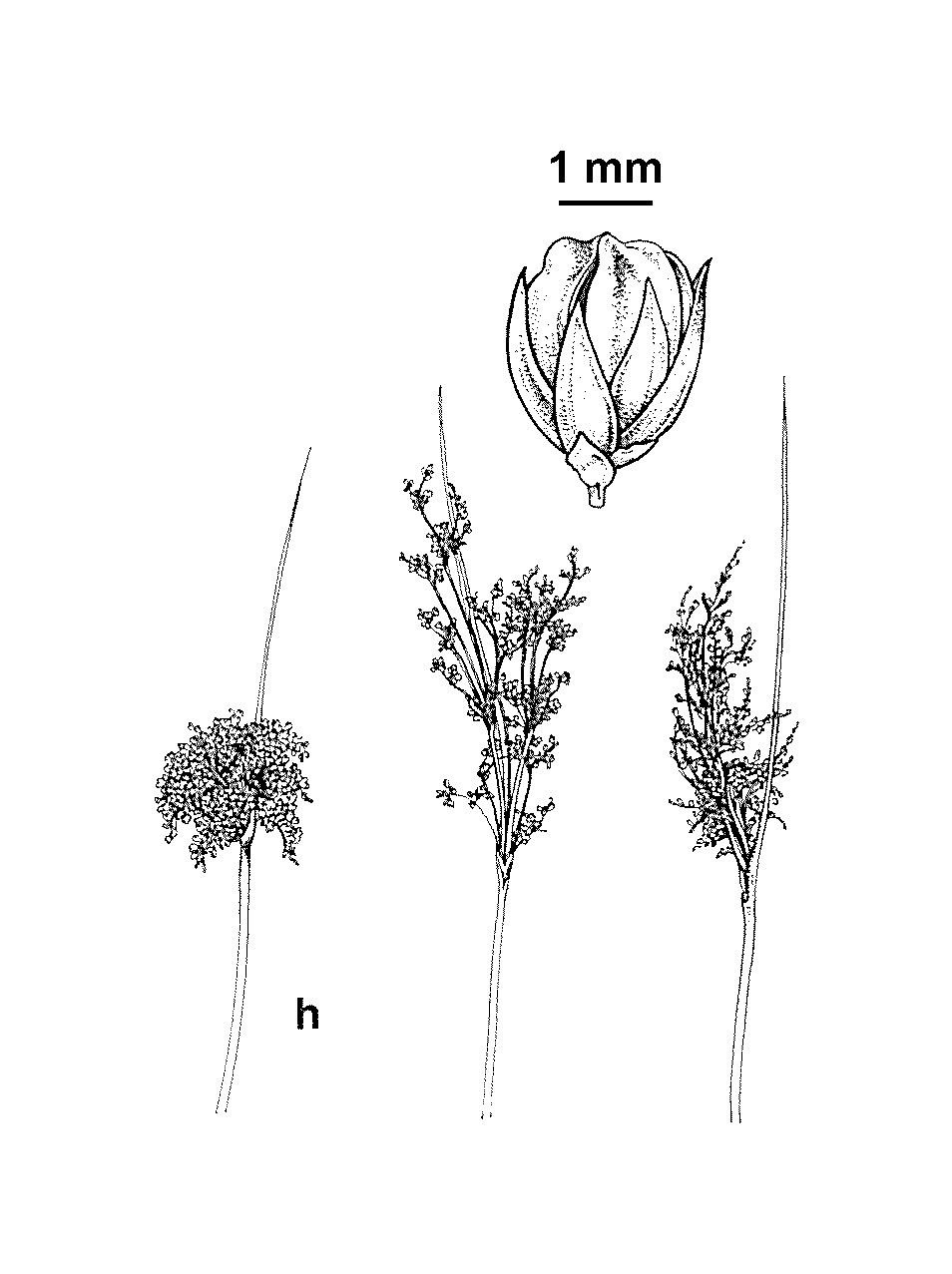Juncus continuus
L.A.S.JohnsonTufted perennial with horizontal or ascending rhizomes. Cataphylls usually tight, pale to medium brown towards the base, to c. 22 cm long. Culms erect, light green, 40–150 cm high and 1.0–4.0 mm diam.; striations 40–80, not strongly raised; pith cobwebby, continuous throughout or occasionally interrupted for generally less than a third of the culm length; stomates superficial. Inflorescence variable, flowers either scattered or clustered; primary bract continuous with culm, to c. 25 cm long; prophylls present. Tepals with a brown longitudinal band on either side of the stramineous midrib or brown throughout, 1.6–2.5 mm long; stamens 3(–6), anthers 0.5–0.8 mm long. Capsules golden-brown, longer than the tepals, 1.8–2.7 mm long. Flowers mostly Dec.–Jan., seeds shed mostly Dec.–Apr.
VRiv, GipP, Gold, EGL, EGU, HSF, HNF, MonT, HFE, VAlp. Also WA, NT, Qld, NSW. Relatively common at low elevations mostly in eastern Victoria, tending to occur on sands or silty-sands along watercourses and other permanently or seasonally wet sites.
Juncus continuus is a distinctive, though variable species, which is most likely confused with J. pallidus and J. alexandri subsp. alexandri. Hybrids with J. vaginatus are known.
Albrecht, D.E. (1994). Juncus. In: Walsh, N.G.; Entwisle, T.J., Flora of Victoria Vol. 2, Ferns and Allied Plants, Conifers and Monocotyledons, pp. 197–233. Inkata Press, Melbourne.
 Spinning
Spinning


